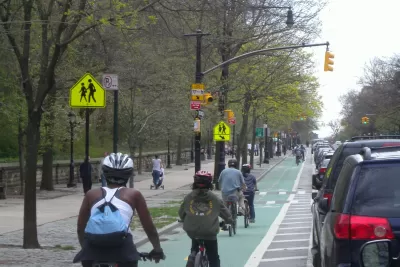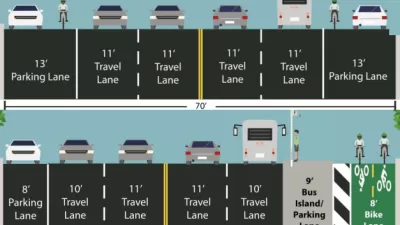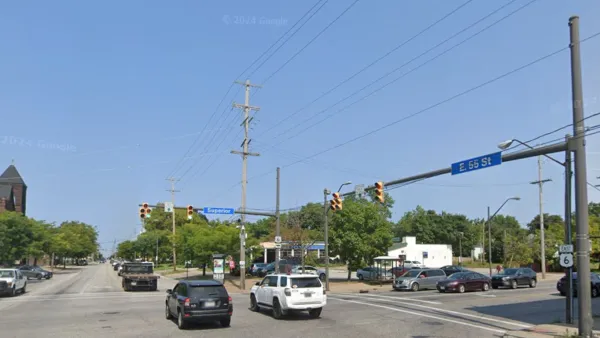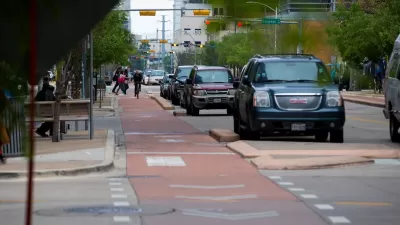While resistance to protected bike lanes can be high, the economic and safety paybacks are substantial.

Matt Kohler takes a closer look at a new video featuring Janette Sadik-Khan, former commissioner of the New York City Department of Transportation, discussing the benefits and challenges of putting in protected bike lanes. Sadik-Khan came on board in 2007, and she describes the biking environment of New York up until that point as dangerous for cyclists.
She was behind the first protected bike lane in the United States, a route on Ninth Avenue in Manhattan, with a design that made the street much safer for bikers. It was a difficult project to implement because parking would be eliminated for the lane and people feared the outcome of that change. “However, reducing the share of road space for cars didn’t usher in the apocalypse, and the protected bicycleway turned out to be a boon for the local economy,” reports Kohler.
In addition, the number of crashes with injuries went down by almost 50 percent and traffic flowed better. Sadik-Kahn says the protected bike lane created a street that is better for all stakeholders – businesses, drivers, cyclists, and pedestrians. Developing safe and reliable networks of bike lanes is one of the best investments that cities can make, she says.
FULL STORY: Video: Protected bikeways make cities safer and boost the economy

Maui's Vacation Rental Debate Turns Ugly
Verbal attacks, misinformation campaigns and fistfights plague a high-stakes debate to convert thousands of vacation rentals into long-term housing.

Planetizen Federal Action Tracker
A weekly monitor of how Trump’s orders and actions are impacting planners and planning in America.

In Urban Planning, AI Prompting Could be the New Design Thinking
Creativity has long been key to great urban design. What if we see AI as our new creative partner?

King County Supportive Housing Program Offers Hope for Unhoused Residents
The county is taking a ‘Housing First’ approach that prioritizes getting people into housing, then offering wraparound supportive services.

Researchers Use AI to Get Clearer Picture of US Housing
Analysts are using artificial intelligence to supercharge their research by allowing them to comb through data faster. Though these AI tools can be error prone, they save time and housing researchers are optimistic about the future.

Making Shared Micromobility More Inclusive
Cities and shared mobility system operators can do more to include people with disabilities in planning and operations, per a new report.
Urban Design for Planners 1: Software Tools
This six-course series explores essential urban design concepts using open source software and equips planners with the tools they need to participate fully in the urban design process.
Planning for Universal Design
Learn the tools for implementing Universal Design in planning regulations.
planning NEXT
Appalachian Highlands Housing Partners
Mpact (founded as Rail~Volution)
City of Camden Redevelopment Agency
City of Astoria
City of Portland
City of Laramie





























